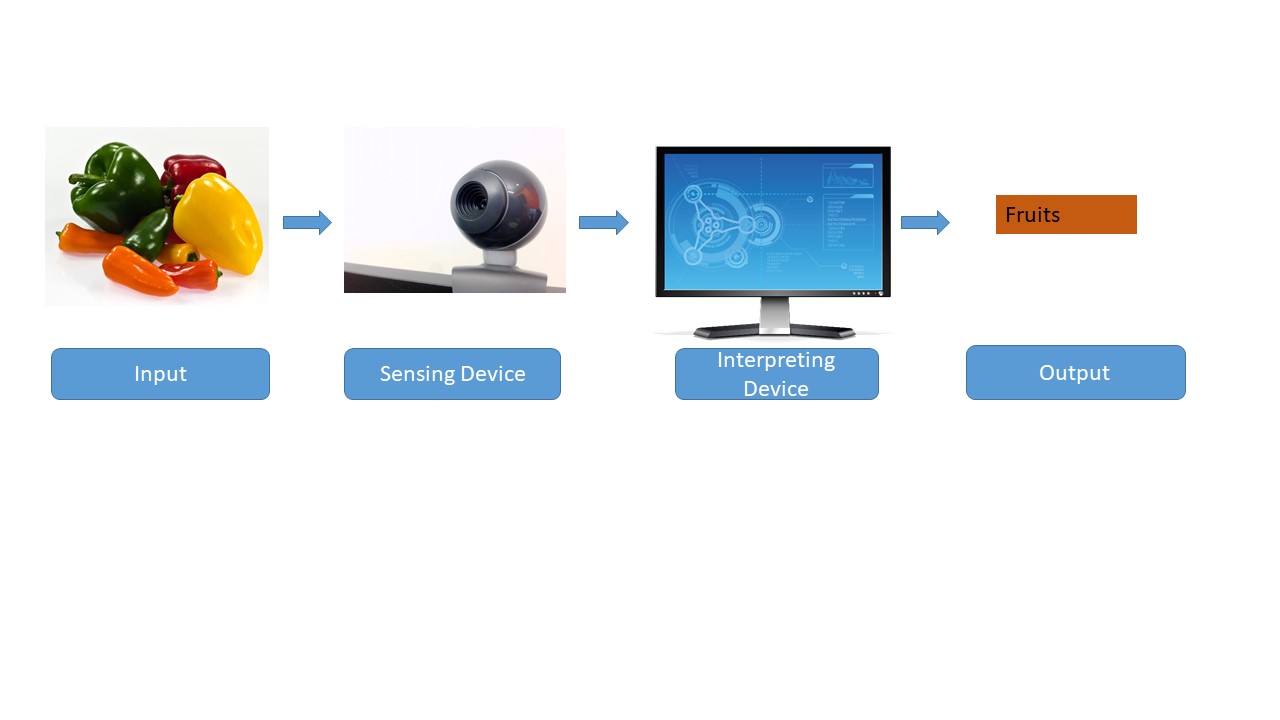Computer vision is rapidly advancing due to improvements in AI algorithms, increased computational power, and the proliferation of data. Enhanced machine learning models allow for more accurate image recognition and processing. The growing demand for automation and smart technologies in various sectors, including healthcare, automotive, and retail, drives further development.
Figure 1: Computer Vision
Source- DBMR Analysis
By Definition
Computer vision is a field of artificial intelligence (AI) that enables computers to interpret and understand visual information from the world, similar to how humans process visual inputs. It involves the development of algorithms and systems that can analyze images and videos to extract meaningful data, such as identifying objects, detecting patterns, and understanding scenes.
The technology encompasses various techniques and applications, including image recognition, object detection, and video analysis. Computer vision is used in diverse areas such as autonomous vehicles, medical imaging, and surveillance systems, enhancing automation and decision-making processes by providing machines with the ability to perceive and interpret visual stimuli.
Computer vision has its roots in the 1960s, emerging from the broader field of artificial intelligence. Early research focused on basic image processing and pattern recognition, using simple algorithms to analyze visual data. In the 1980s, significant advancements were made with the development of more sophisticated techniques for feature extraction and image segmentation.
The 1990s saw a surge in interest due to the advent of machine learning, which introduced more powerful methods for image classification and object detection. The 2000s brought a revolution with the advent of deep learning and convolutional neural networks (CNNs), significantly improving the accuracy and capabilities of computer vision systems. Today, computer vision continues to evolve rapidly, driven by advancements in AI, increased computational power, and the proliferation of high-resolution imaging technologies.
Market Developments
- In March 2021, JAI A/S launched new products named GO-5000M-PGE-UV and GO-5000M-PMCL-UV which are medium speed cameras. These products can deliver 5-megapixel resolution images and has frames per second of 22 to 107 fps. They can be used for UV laser calibration, surface inspection of metals and plastics among others. These products can be deployed in various industries for high quality resolutions
- In March 2020, KEYENCE CORPORATION launched a new product in vision system with Pattern Projection Lighting CV-X Series which is capable of 2D inspection vision system, height extraction and 3D inspection among others. It is powered by vision controller. It was a unique product which can inspect and analyze the flaws and it can be widely used in automobile companies. It is a great asset for the company because of its reliability in detecting flaws
- In April 2024, Cadence Design Systems, Inc. launched new product- Vision Q8 and Vision P1 DSPs. This was done to support the growing demand in sectors such as automotive, mobile and consumer markets. As these models were optimized for high-end mobile and multi-camera automotive applications, the products improve the performance by 4 times. The company did this to expand its product portfolio and offer reliable products to the consumers
Future Opportunities -
Furthermore, computer vision is vast and transformative, spanning areas like autonomous systems, where it will enhance the capabilities of self-driving cars and drones through advanced object detection and navigation. In healthcare, computer vision promises breakthroughs in diagnostic imaging, enabling early detection of diseases and personalized treatment. Additionally, its application in augmented reality and smart cities will improve interactive experiences and urban management by enabling real-time data analysis and environmental monitoring. As technology advances, computer vision is poised to drive innovation across industries, offering new solutions and efficiencies in ways previously unimaginable.
Technological Advancements in the Computer Vision Market
Several key developments drive technological advancements in computer vision. The introduction of deep learning and convolutional neural networks (CNNs) has significantly enhanced image recognition and classification accuracy. Improved hardware, such as GPUs and TPUs, provides the computational power needed for processing large datasets and complex models. The availability of vast annotated datasets has accelerated model training and performance. Additionally, innovations in edge computing enable real-time image processing on devices with limited resources. Advances in 3D imaging and LIDAR technology are enhancing spatial understanding and object detection. Enhanced algorithms for feature extraction and pattern recognition are also pushing the boundaries of what computer vision systems can achieve. Collectively, these advancements are expanding the capabilities and applications of computer vision across various industries.
For instance,
- In March 2024, T-Hub and the Department of Science and Technology (DST) launched the Machine Learning and Artificial Intelligence Technology Hub (MATH) in India. This initiative aims to advance AI innovation, generate over 500 AI-related jobs by 2025, and support more than 150 startups each year. MATH is designed to create a vibrant ecosystem for AI startups, enhancing India's position in the global AI market and fostering technological growth and job creation
Related Reports-
- Global Medical Device Reprocessing Market,
- North America Medical Device Reprocessing Market
- Global Medical Device Cleaning Market,
- Global Medical Device Packaging Market













